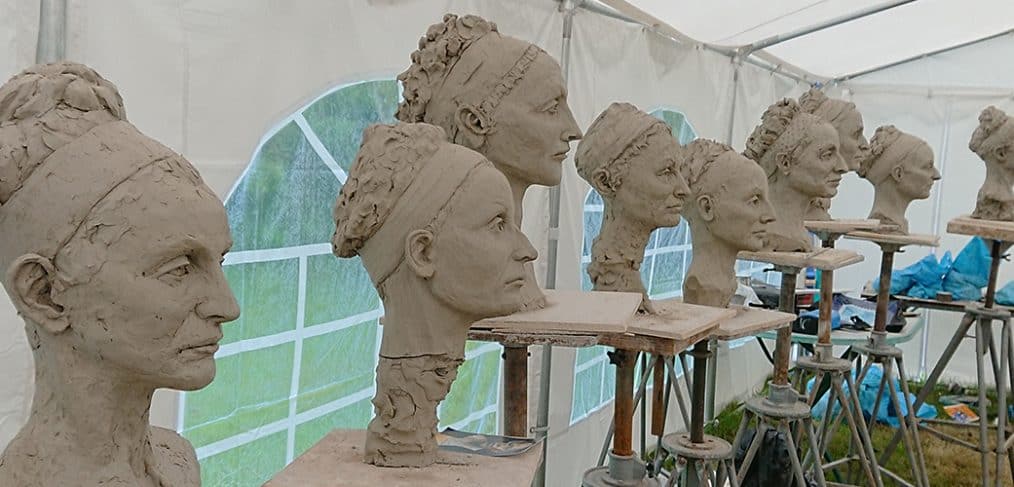In the Oscar-nominated movie Camille Claudel, we see the French sculptor voraciously digging mud from the clay walls of a deep trench in Paris. The imaginary aroma of wet clay fills your nostrils as you watch the mud squeeze through her fingers.
Fortunately today, artists no longer have to dig through dirt and mud and haul it to our studios (along with the water), nor do we have to build our own armatures.
The kind of clay a sculptor uses depends in large part on what the artist intends to create with it and how it will be cast when they are finished.
Modeling clay comes in oil or water-based. They also come in dry form that you add water to. (Japanese potters often do this for their signature pieces).
Clay’s come in many colors; grays, yellow ochres, reds, white or black. Each has its own character and fires differently in a kiln. Most sculptors experiment when they begin to determine what colors and plastic properties work for their style. Price plays a factor too of course. Clays can be purchased in five to 50-pound packages.
Some clays are soft, others have a harder consistency. A harder clay is better for smaller sculptures as it preserves more details. Softer clays allow artists to manipulate large areas easier so work better with larger pieces of sculpture.
Water-based clays often need grog added to it. Grog is clay that has been fired and then ground up. It gives your clay tooth and gives it strength. It also keeps the clay from cracking, reduces shrinkage, and allows gases to escape in the clay body.
Clay will dry out and become very fragile and must be re-wet and covered in between sessions.
The International Sculpture Center provides a list of Art Services and Suppliers including art supply stores, installation, and moving companies by geographic location. They also publish Sculpture Magazine.
Image by Elé Van Schoor of Marlborough College from a Luke Shepherd Sculpting course. Clay portraits will be cast in bronze.

